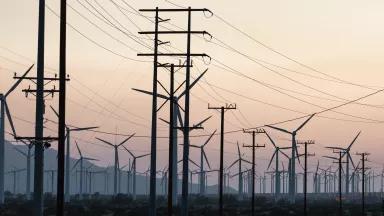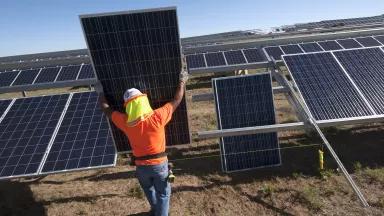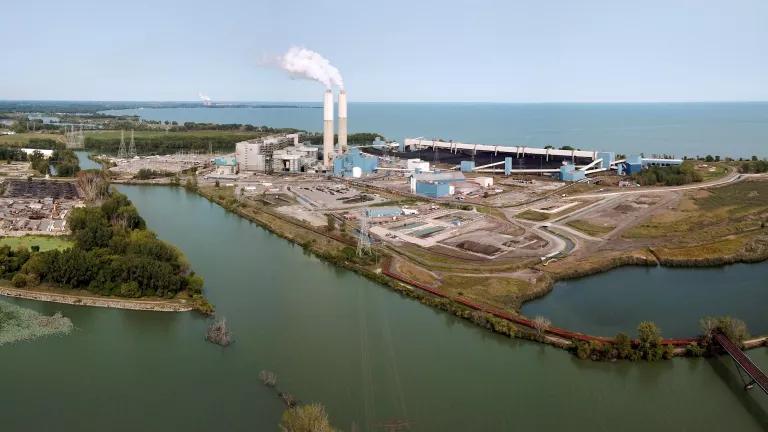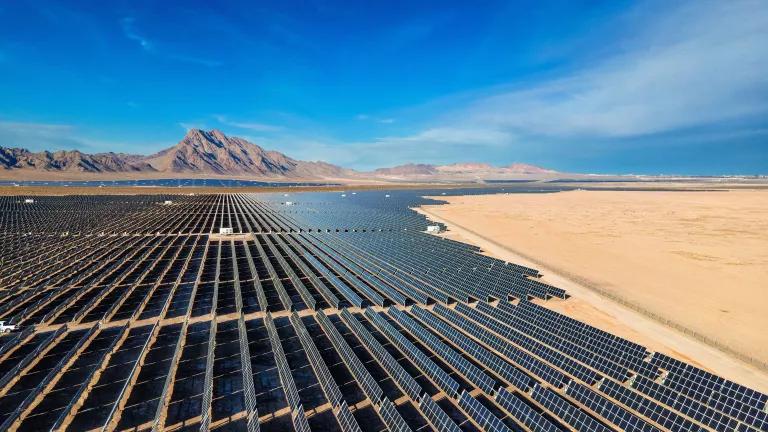NRDC Analysis Charts Pathways to U.S. Climate Goals
NRDC modeling finds that, by deploying five decarbonization strategies, the United States can affordably and feasibly achieve a net zero economy by 2050.
.jpg.jpg?h=10ac985f&itok=VoXISiXt)
Werner Slocum/NREL, 64436
A new NRDC analysis, Clean Energy Now for a Safer Climate Future: Pathways to Net Zero by 2050, identifies five key decarbonization strategies for meeting the United States’ climate goals. By using this decade to deploy clean energy at speed and scale, the United States can feasibly and affordably reduce its greenhouse gas (GHG) emissions to net zero within the next three decades.
Though the passages of the Inflation Reduction Act in 2022 and the Infrastructure and Investment Jobs Act (IIJA) in 2021 represent critical progress, the country is not yet on track to reach net zero emissions by 2050. By deploying five crucial decarbonization strategies—clean power, energy efficiency, electrification, natural carbon solutions, and decarbonized fuels—NRDC's analysis finds that achieving net zero GHG emissions in the United States can be technologically feasible and cost-effective.
The first four decarbonization strategies capture the highest priority actions for getting the United States on track to net zero within this crucial decade. They also offer economic benefits: In NRDDC’s core decarbonization pathway, the country sees an average of about $9 billion a year in net energy system cost savings over the next three decades compared to a business-as-usual case. By 2050, those benefits increase to $35 billion a year, due to avoided expenses on fossil fuel infrastructure and the fuels themselves.
On the other hand, if the United States waits or fails entirely to deploy these first four strategies, it will need to rely more on fuel-based technologies and technological carbon capture, undertaking a more expensive and riskier pathway to net zero. If electrification progress is delayed until the mid-2030s, for example, total energy system spending will be almost $1.3 trillion higher over the next three decades than in NRDC's core decarbonization case.
The strategies
NRDC’s pathways efficiently and cost-effectively achieve net zero through five key decarbonization strategies. Our foundational decarbonization pathway depends on an aggressive, near-term deployment of the first four strategies and a measured, later-term deployment of the fifth.
1. Clean power: Decarbonize the electricity grid by switching from fossil fuels to zero-carbon electricity resources.
2. Energy efficiency: Minimize energy waste and maximize cost savings by transitioning to higher-efficiency equipment, appliances, vehicles, and building materials.
3. Electrification: Transition fossil-powered end uses, like gasoline cars and gas heaters, to electricity to reduce pollution and take advantage of an increasingly renewable-powered grid.
4. Natural carbon solutions: Protect and expand the land sink. These solutions include safeguarding the nation’s carbon-critical mature and old-growth forests, recovering lost forests via reforestation, protecting and restoring wetlands, and implementing sustainable agricultural practices to enhance soil carbon sequestration.
5. Decarbonized fuels: Replace fossil fuel use in the remaining, hardest-to-electrify applications, using verifiably carbon-neutral and carbon-negative fuels (e.g., electrolytic hydrogen, electrofuels, and biofuels) with the proper air pollution controls where appropriate. Use technological carbon dioxide removal technologies (including direct air capture and on-site carbon capture) to address remaining carbon pollution in the system (e.g., process emissions from cement production).
The scenarios
NRDC’s analysis used modeling from Evolved Energy Research to identify least-cost pathways to achieving net zero emissions under varying policy and technology conditions. The model estimates the technology, infrastructure, and cost requirements of each pathway. Each sensitivity scenario adjusts variables within one or more of the five decarbonization strategies to capture the impact of failure, delay, or uncertainty in their implementation.
- Reference (Business-as-Usual): The current U.S. trajectory absent further policy intervention beyond May 2022; provides a shared baseline with which all other scenarios can be compared.
- Core: A central, controlled decarbonization case from which all other scenarios are built.
- Delayed Action: A sensitivity demonstrating the consequences of stalled progress on the electrification of buildings, industry, and transportation.
- No Fossil Fuels: A sensitivity demonstrating a 100 percent fossil-free system by 2050 for both energy and non-energy (e.g., feedstock) uses.
- Constrained Renewables: A sensitivity where renewable development is constrained to current build rates to model potential siting, permitting, or other interconnection challenges.
- Low Land Sink: A sensitivity that assumes smaller natural land sink due to uncertainty around natural carbon stock factors, including climate impacts, development patterns (e.g., continued deforestation), and changes to forest and soil health.
The results
- The power sector represents the most impactful lever in the U.S. climate solutions toolbox. Transitioning to carbon-free electricity is the country’s largest and most cost-effective opportunity to cut carbon pollution in this decade. It is also essential to unlocking emissions reductions in the other sectors: As more vehicles and buildings switch from fossil fuels to electricity, they will only be as clean as the grid powering them.
- Build, build, build: To meet the demands of the expanding carbon-free electricity grid, the core scenario accelerates the development of renewable energy and interregional transmission to unprecedented rates. The model builds more than 1,000 gigawatts of renewable capacity by 2030—about four times the pace of the past two years. Interregional transmission capacity doubles, then triples, then quadruples from today’s levels in each subsequent decade leading to 2050. This translates to an annual growth rate of 9 percent in this decade, well beyond the historical 2 percent annual growth rate since 1978.
- Energy efficiency can “right-size” this build-out. By pairing electrification with ambitious energy efficiency investments, the decarbonization scenarios all see decreased final energy demand, even as electricity demand increases. By limiting new infrastructure build-out, annual energy system spending is $35 billion cheaper in the core scenario relative to the reference case by 2050.
- American forests, wetlands, and farmlands will play a critical role in naturally sequestering carbon. Protecting and expanding the natural carbon sink can also reduce future reliance on more expensive carbon dioxide removal technologies. Investments in reforestation, afforestation, and native ecosystem restoration should continue to expand the natural land sink through 2050.
- Delay or failure to deploy these “no-regrets” solutions comes at a hefty price:
- Under the constrained renewables case, the model must turn to more expensive alternatives, such as select distributed energy resources and nuclear small modular reactors. This constraint also limits the supply of cheap electricity available for hydrogen and electrofuels production that can help decarbonize heavy industry and shipping.
- The delayed action case misses early opportunities to decarbonize via electrification and instead continues to build out new fossil infrastructure. This results in the need for more direct air capture and decarbonized fuels as it attempts to decarbonize a system still based on fuel infrastructure, incurring the highest cumulative system costs of any scenario.
These pathways all point to one clear finding: This decade must see a profound transformation of the ways by which the United States produces and uses energy. U.S. leaders must capitalize on the momentum of the Inflation Reduction Act and pursue today’s highest-priority emissions reduction opportunities. In the near term, federal policymakers must enact strong standards for power plants, vehicles, and appliances alongside robust protections of U.S. lands and freshwater to get the country on track to a net zero future. The window of opportunity to limit warming to 1.5 degrees Celsius is rapidly closing, and immediate action is critical to ensuring a safer climate future for us all.





